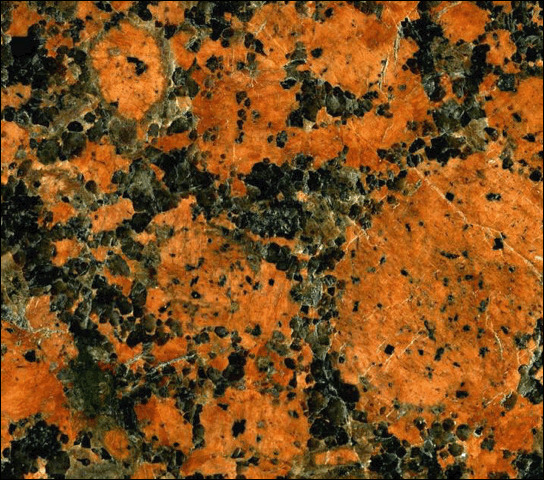First time I saw this rock, I mistook it for another. Both may look similar, but let's have a closer look at both and see what differences there are.
Granite
Granite is an igneous rock (formed by the cooling of magma). It's main compositions are quartz (light coloured), alkali feldspar (pink) and plagioclase (grey). Granites can also contain other minerals, such as biotite and mica (black). I won't bore you with the details, but keep the colours in mind - our goal is to learn about textures.
Orbicular Granite
These rocks have a unique appearance due to orbicules - concentrically layered, spheroidal structures, probably formed through nucleation around a grain in a cooling magma chamber due to rapid physical changes.

Rapakivi Granite
Rapakivi is used as a a textural term. Rapakivi is a Finnish compound of "rapa" (meaning "mud" or "sand") and "kivi" (meaning "rock").

Rapakivi granite type Wiborgite - with well defined plagioclase rims

Rapakivi granite type pyterlite - note the lack of plagioclase rims
What's the difference?
Well they might be circles - but there are 2 huge differences
- Rapakivi granite ovoids usually show one crystal of alkali feldspar. Orbicular granite orbicules contain many crystals of various minerals.
- The rims of rapakivi granites are thinner and are a layer of plagioclase. Orbicular granite rims are thicker and contain many layers of various minerals
Logging Tasks
The location takes you to statue of Oscar and Eduarde Wilde, where the bench is the Earthcache of interest. Answer the following in the message center. Try your best, but Q3 will definitely prove your visit.
- Describe the rock texture in front of you.
- Colours of minerals and circles
- Size of the crystals in and outside the circles
- Radius/Diameter of the circles
- Based on your answer, is the rock orbicular granite or rapakivi granite. Explain why
- If rapakivi, is it wiborgite or pyterlite? Explain why
- Attach a photolog to prove your visit. A photo of the plaque with a thumbs up or geocaching username on a paper would suffice. Every cacher should have a pen!